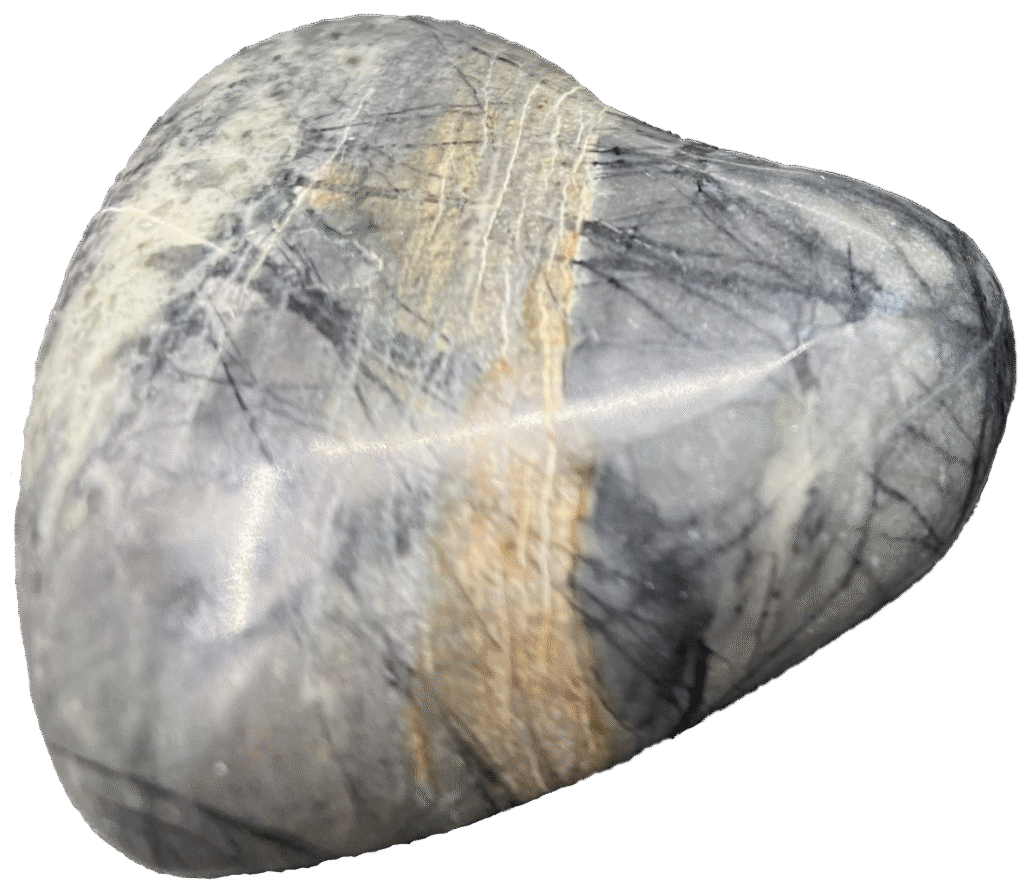
Picasso Stone, also known as Picasso Jasper, is a captivating gemstone that embodies the essence of abstract art. Its swirling patterns and vibrant colours, reminiscent of the famous painter’s work, make it a unique and visually striking stone.
Origins and Composition
Picasso Stone is a metamorphic limestone, primarily composed of calcium carbonate with various mineral inclusions that create its unique patterns. These inclusions, which can include iron oxides, clay, and other minerals, are responsible for the swirling lines, blotches, and dendritic patterns that resemble brushstrokes or abstract paintings.
The name “Picasso Stone” is a descriptive term, clearly referencing its resemblance to the artwork of Pablo Picasso. The swirling patterns and often contrasting colours evoke the abstract and expressive nature of his paintings.
Locations
Picasso Stone is found in various locations around the world, though it is not considered particularly abundant. Significant deposits have been found in the United States (particularly in Utah), Mexico, and other countries. The specific colours and patterns of Picasso Stone can vary depending on the location and the types of mineral inclusions present.
Archaeological Finds and Historical Records
While limestone has been used by humans for construction and various other purposes for millennia, specific historical records of Picasso Stone as a distinct gemstone are limited. This is due to its relative rarity and its potential confusion with other patterned stones throughout history.
Its use in jewellery and for its metaphysical properties is a contemporary practice.
Folklore, Legends, and Tales
As a recent addition to the world of crystals and metaphysical tools, Picasso Stone does not have the rich history of folklore and legends associated with ancient gems. However, its unique appearance and connection to artistic expression have naturally led to certain beliefs and associations. It is often linked to themes of creativity, self-expression, and connection to the natural world.
Some believe that Picasso Stone can help to stimulate one’s imagination, inspire artistic endeavours, and promote a sense of joy and playfulness. It is also sometimes associated with grounding and stability, as it is a stone formed from the Earth.
Links with Astrology and the Chakra System
Picasso Stone is often associated with the planet Mercury in astrology, reflecting its connection to communication, intellect, and creativity. Mercury represents our mind, our communication style, and our ability to express ourselves. Picasso Stone’s connection to artistic expression aligns well with Mercury’s influence.
It is also sometimes linked to the planet Uranus, which is associated with innovation, originality, and sudden changes. Picasso Stone’s unique patterns and association with artistic expression can resonate with Uranus’s energy.
In the chakra system, Picasso Stone is associated with the sacral chakra (Svadhisthana). This chakra is in the lower abdomen and is associated with creativity, passion, emotions, and sexuality. Picasso Stone’s ability to inspire creativity and self-expression makes it a suitable stone for balancing the sacral chakra. It can also be linked to the root chakra (Muladhara) due to its connection to the Earth and its grounding properties.

Picasso Stone
Picasso Stone inspires creative flow, emotional clarity, and inner harmony. Its abstract patterns reflect transformation, grounding, and artistic insight.
